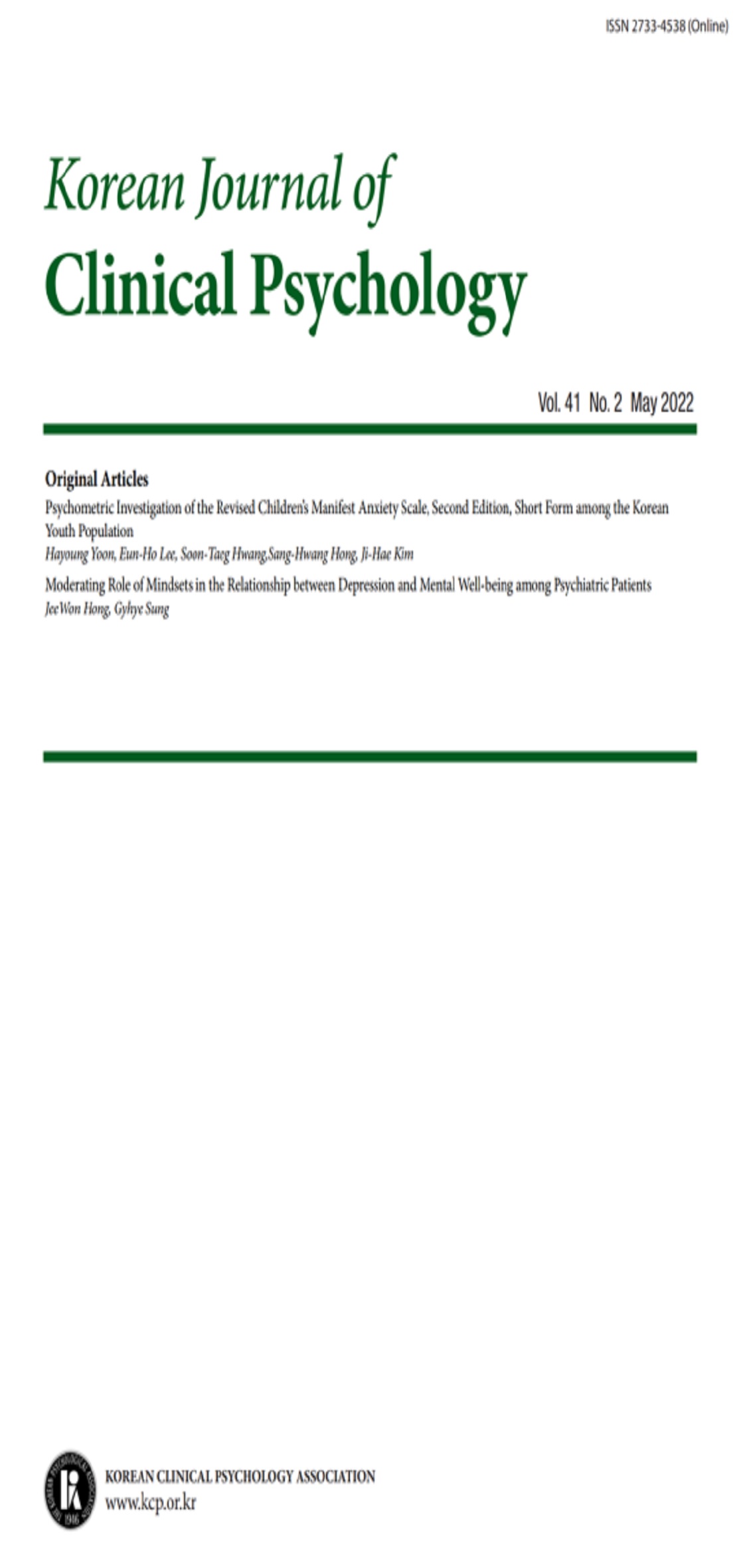open access
메뉴
open access
메뉴 E-ISSN : 2733-4538
E-ISSN : 2733-4538
본 연구에서는 자녀의 부정 정서에 대한 어머니의 반응 잠재계층을 확인하고 이러한 잠재계층에 영향을 미치는 아동의 기질 프로파일과 잠재계층에 대한 아동의 문제행동의 차이를 확인하고자 하였다. 이를 위해 서울, 경기 소재 초등학교에 재학 중인 4, 5, 6학년의 어머니 769명이 연구에 참여하였으며 아동의 기질, 자녀의 부정 정서에 대한 어머니의 반응, 아동의 문제행동에 대해 평가하였다. M plus를 활용한 잠재프로파일 분석 결과 자녀의 부정 정서에 대한 어머니의 지지적 반응 잠재계층은 ‘소극적 지지 집단’(97명, 13.44%), ‘평균 지지 집단’(469명, 59.52%), ‘적극적 지지 집단’(203명, 27.05%)으로 분류되었고, 어머니의 비지지적 반응 잠재계층은 ‘비지지-비처벌 집단’(281명, 36.22%), ‘비지지-회피 집단’(382명, 49.5%), ‘비지지-혼란 집단’(106명, 14.28%)으로 분류되었다. 아동의 사회적 민감성과 인내력 기질은 어머니의 지지적 반응에 대한 잠재계층을 유의하게 예측하였고, 아동의 자극추구와 위험회피 기질은 어머니의 비지지적 반응에 대한 잠재계층을 유의하게 예측하였다. 또한 아동의 내재화 및 외현화 문제행동은 적극적 지지 집단보다 평균 지지 집단에서, 평균 지지 집단보다 소극적 지지 집단에서 유의하게 높았으며 내재화 문제행동은 비지지-비처벌 집단보다 비지지-회피 집단과 비지지-혼란 집단에서, 외현화 문제행동은 비지지-비처벌 집단, 비지지-회피 집단, 비지지-혼란 집단 순으로 유의하게 높은 수준을 보였다. 본 연구는 아동의 기질적 취약성이 부모의 비지지적 반응의 수준을 높여 아동의 심리사회적 적응에 불리하게 작용할 수 있음을 확인함으로써 취약한 기질의 아동과 그의 부모에 대한개입의 필요성을 시사하고 개입의 방향성을 제공하였다.
This study aimed to confirm the latent class of mothers' reactions to children’s negative emotions and evaluate the difference between children’s temperament profile affecting the latent class and the children’s problem behavior about the latent class. To achieve these objectives, we recruited 769 mothers of 4th, 5th, and 6th graders attending elementary schools in the Seoul and Gyeonggi-do areas. This study evaluated children’s temperament, mothers’ reactions to children’s negative emotions, and children’s problem behavior. The results of latent profile analysis using M plus showed that the latent class of mothers’ supportive reactions to children’s negative emotions was divided into ‘passive support group’ (97 subjects; 13.44%), ‘average support group’ (469 subjects; 59.52%), and ‘active support group’ (203 subjects; 27.05%). Moreover, the latent class of maternal non-supportive response was divided into ‘non-supportive: non-punishment group’ (281 subjects; 36.22%), ‘non-supportive: avoidance group’ (382 subjects; 49.5%), and ‘non-supportive: confusion group’ (106 subjects; 14.28%). The reward dependence and persistence temperament of children significantly predicted the latent class for the maternal supportive reactions, while the novelty seeking and harm avoidance temperament of children significantly predicted the latent class for maternal non-supportive reactions. Moreover, children’s internalizing and externalizing behavioral problems were significantly higher in the average support group than in the active support group and in the low support group than in the average support group. The internalizing behavioral problem was significantly higher in the non-supportive: avoidance group and the nonsupportive: confusion group than in the non-supportive: non-punishment group. The externalizing behavioral problem was significantly high in the order of the non-supportive: non-punishment group, the non-supportive: avoidance group, and the non-supportive: confusion group. The results of this study clearly revealed that the vulnerability of children’s temperament could negatively affect children's psychosocial adjustment by increasing the level of parental non-supportive reactions. As a result, there is a need for preventive intervention for children of vulnerable temperament and their parents and providing direction for intervention.
